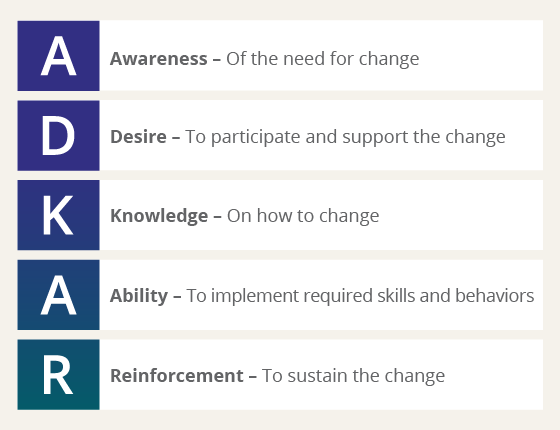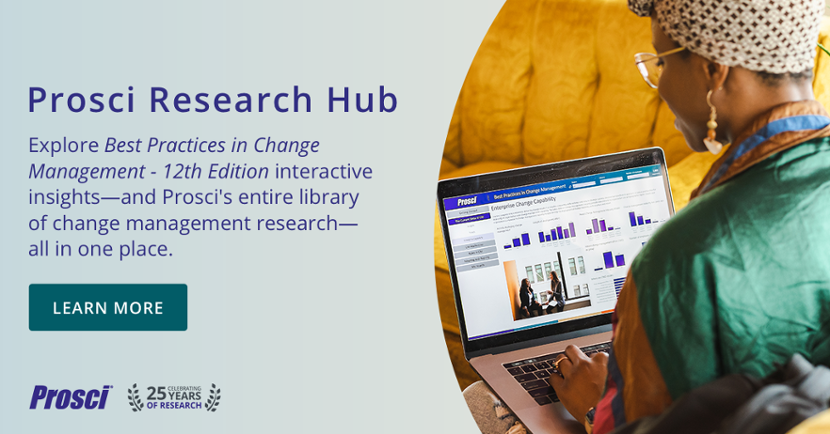Using the ADKAR Model to Facilitate Individual Change

2 Mins
Updated: February 27, 2025
Published: August 29, 2017

In our age of innovation and sophistication, I am always amazed by the power of the throwback. We post old pictures on social media in honor of “throw-back Thursday.” We sing and dance along with throw-back songs (which, for me, is early nineties pop music). We look back at old year books or family photo albums. There’s a reason we love throw-backs: they feel comfortable and familiar, but they also take us back to our roots and our formative experiences. It’s a powerful thing to return to where we came from.
Get deep insights and data about Applications of ADKAR, along with Prosci's entire research library,
when you subscribe to Research Hub.
The Prosci ADKAR Model

It’s for a similar reason that we studied the original purpose of the Prosci ADKAR Model in our Applications of ADKAR research study, where we studied seven use cases of the ADKAR Model in change management, including measuring change outcomes and equipping senior leaders. We also studied the original intention of the ADKAR Model: how to understand and influence individual change—because it's important to come back to original intent from time to time. That’s why we included the throw-back of “facilitating individual change” as a research deep dive.
Why Use the ADKAR Model
for Facilitating Individual Change?
At its foundation, the ADKAR Model is a powerful framework for understanding how change can happen with a single individual. It answers the question, "What outcomes must be present for successful, sustainable change to take hold in a single person?” When we understand the outcomes that one team member (or family member or friend) needs to have in place, we can take practical steps to influence and help that individual achieve those outcomes.
The ADKAR Model can be used personally by viewing a change you are working through and identifying where and why you may be struggling. It can also be used to help evaluate change with other people—as a framework for coaching conversations—and can help you pinpoint where a colleague, friend or employee is stuck in the change process. From there, you can decide on targeted action steps.
Research on the Prosci ADKAR Model
“The model fits nicely and naturally with a personal journey of change, irrespective of whether linked to a wider corporate change.” – Applications of ADKAR study participant
In our Applications of ADKAR research study, we asked users of the ADKAR Model to share why they used the model to facilitate change with an individual person, how they applied it, and the impacts of the application. Their insights can help you apply the ADKAR Model to your work in new ways and achieve even greater success with change.




